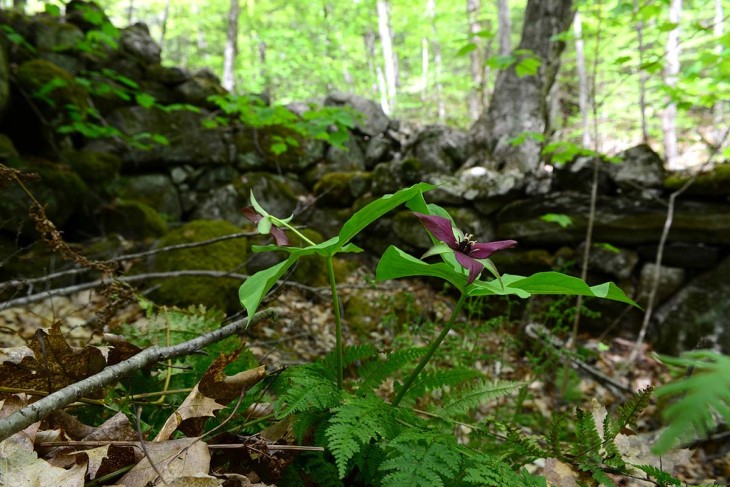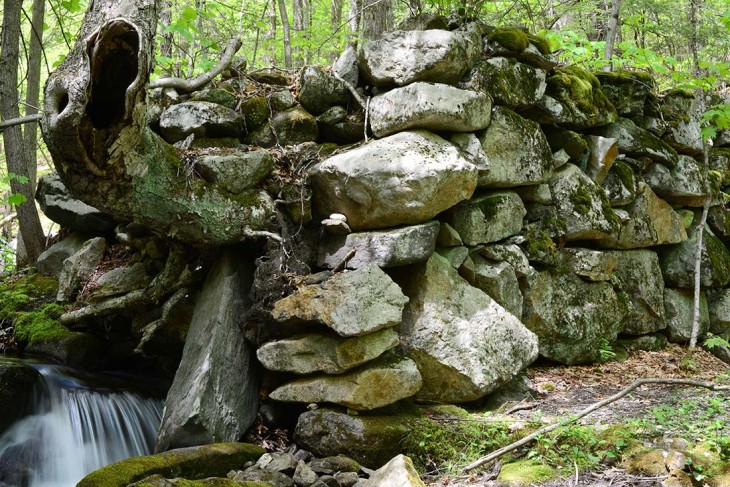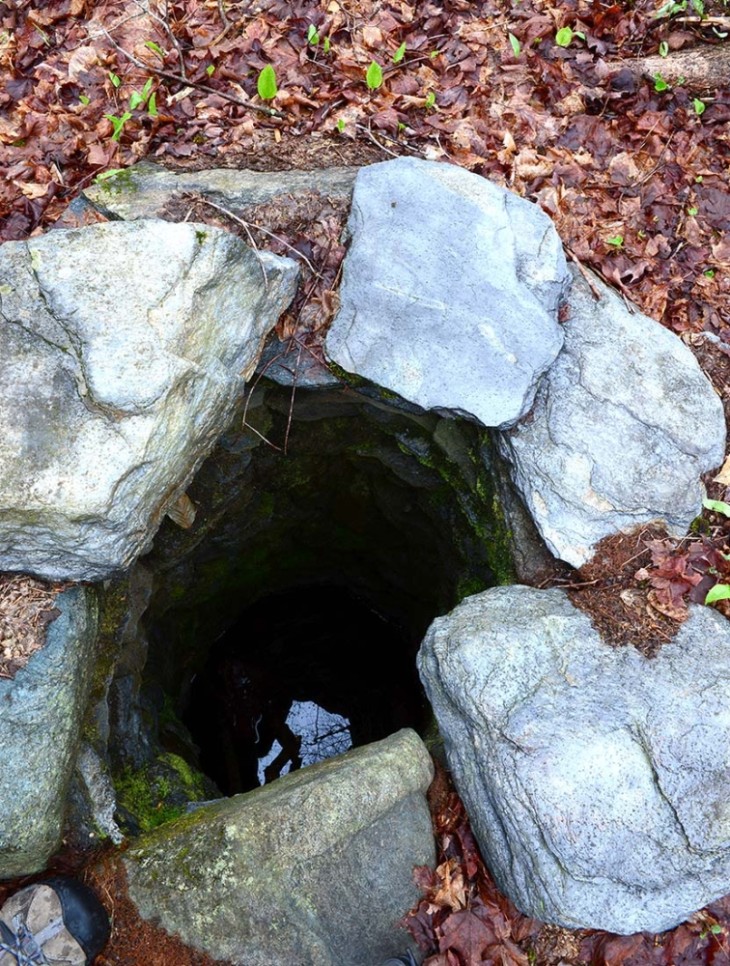
In the late 1990s, when my wife and I moved to New England from the sparse desert and jagged peaks of the Southwest, it took some time to adjust to the dense, green landscape of northern hardwood forest. During rambles through our new western Massachusetts home, I was struck by the history suggested by the stone structures we found, sometimes in the most unexpected places. Once a landscape dominated by vast sheep pastures and punctuated by the sound and smoke of industry, in many places New England’s forests have regrown but remain riddled with artifacts from the past: stone walls meandering through the woods, cellar holes now home to wildflowers and ferns, and mill sites where natural resources were converted to material riches.
These cultural remnants were not crafted by ancient Anasazi hands, but rather by folks whose tenure here ended rather recently. By the mid-1800s, these lands were emptying out and rewilding as European settlers moved west to find larger and greener pastures. But their footprint remains, and books such as Tom Wessels’s Reading the Forested Landscape: A Natural History of New England can help a person decode this history.
During spring 2021, as wildflowers burst skyward and shadbush bloomed, I packed a camera and visited some favorite sites in a three-town radius from my home, to create my own stone record of this land.








Discussion *